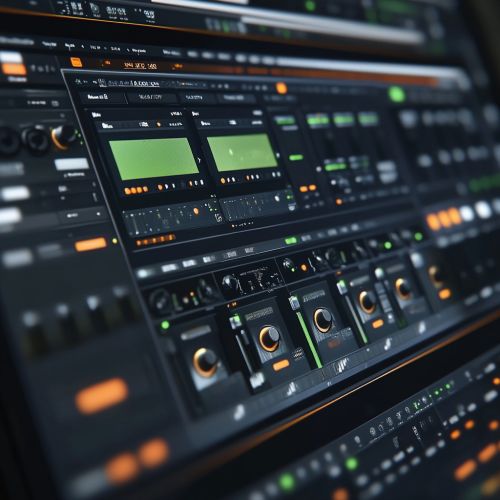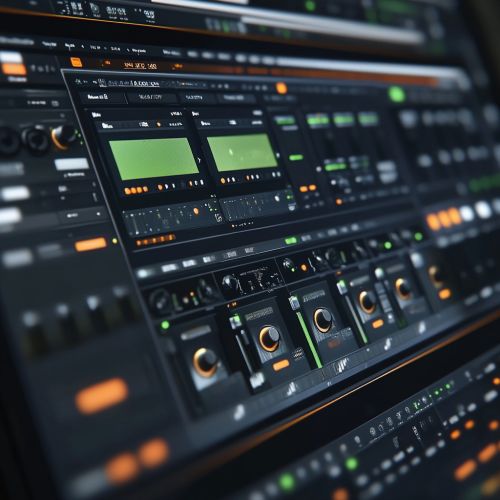Digital audio effects
Digital Audio Effects
Digital audio effects are processes applied to audio signals to alter their characteristics in various ways. These effects are used extensively in music production, sound design, broadcasting, and multimedia applications. They can range from simple modifications like equalization to complex transformations like reverb and pitch shifting. This article delves into the technical aspects, types, and applications of digital audio effects.


Overview
Digital audio effects manipulate audio signals using digital signal processing (DSP) techniques. These effects are implemented in software or hardware and are essential tools for audio engineers and producers. The primary goal of digital audio effects is to enhance, modify, or creatively alter the sound.
Types of Digital Audio Effects
Digital audio effects can be categorized based on their function and the type of processing they perform. The main categories include:
Time-Based Effects
Time-based effects alter the timing of the audio signal. Common examples include:
- **Delay**: This effect involves recording an audio signal and playing it back after a set period. Variations include simple delay, echo, and slapback delay.
- **Reverb**: Reverb simulates the reflections of sound in a physical space, creating a sense of depth and space. It is achieved by convolving the audio signal with an impulse response of the desired environment.
- **Chorus**: Chorus effects duplicate the audio signal and slightly delay and modulate the pitch of the duplicates, creating a thicker and richer sound.
Modulation Effects
Modulation effects involve varying certain parameters of the audio signal over time. Examples include:
- **Flanger**: This effect combines the original signal with a delayed version of itself, where the delay time is modulated, creating a sweeping effect.
- **Phaser**: A phaser splits the audio signal into multiple paths, shifts the phase of one path, and then recombines them, resulting in a series of peaks and troughs in the frequency spectrum.
- **Tremolo**: Tremolo modulates the amplitude of the audio signal, creating a periodic variation in volume.
Dynamic Effects
Dynamic effects control the amplitude of the audio signal. Key examples are:
- **Compressor**: A compressor reduces the dynamic range of an audio signal by attenuating the louder parts and boosting the quieter parts. This results in a more consistent volume level.
- **Limiter**: A limiter is a type of compressor with a high ratio, used to prevent the audio signal from exceeding a specified threshold.
- **Expander**: An expander increases the dynamic range by reducing the level of signals below a certain threshold, making quiet sounds quieter.
Spectral Effects
Spectral effects manipulate the frequency content of the audio signal. Common spectral effects include:
- **Equalization (EQ)**: EQ adjusts the balance of different frequency components within an audio signal. It can be used to enhance or attenuate specific frequency ranges.
- **Filter**: Filters selectively attenuate or boost certain frequencies. Types of filters include low-pass, high-pass, band-pass, and notch filters.
- **Pitch Shifting**: Pitch shifting changes the pitch of the audio signal without affecting its duration. This can be used for creative effects or to correct pitch inaccuracies.
Applications
Digital audio effects are used in various fields, including:
- **Music Production**: Effects are essential in shaping the sound of musical recordings. They are used to create ambiance, enhance instruments, and add creative elements to tracks.
- **Sound Design**: In film, television, and video games, sound designers use effects to create realistic or fantastical audio environments.
- **Broadcasting**: Broadcasters use effects to ensure consistent audio quality and to add special effects to programs.
- **Multimedia**: Digital audio effects are used in multimedia applications, such as interactive installations and virtual reality, to enhance the user experience.
Technical Considerations
Implementing digital audio effects requires understanding several technical concepts:
- **Sampling Rate**: The sampling rate determines the resolution of the digital audio signal. Higher sampling rates provide better quality but require more processing power.
- **Bit Depth**: Bit depth affects the dynamic range and noise floor of the audio signal. Higher bit depths offer greater dynamic range and lower noise.
- **Latency**: Latency is the delay introduced by processing the audio signal. Minimizing latency is crucial in real-time applications, such as live performance and monitoring.
- **DSP Algorithms**: The quality and efficiency of digital audio effects depend on the algorithms used. Advanced algorithms can provide high-quality effects with minimal artifacts.
